
views
X
Research source
Converting a Mixed Number to an Improper Fraction
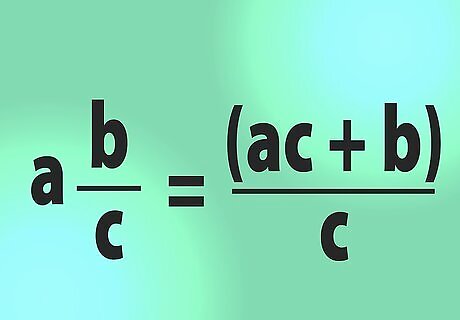
Learn the basic equation. If a mixed number is a b/c then the equation used to convert it to an improper fraction is (ac+b)/c. In this equation: A is the whole number. B is the numerator (the top portion of the fraction). C is the denominator (the bottom portion of the fraction).
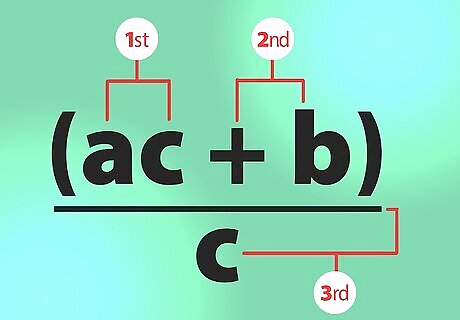
Remember the order of operations. BEDMAS or PEMDAS dictates that you must first address the numbers in parentheses. Since multiplication and division come first, you will first multiply ac. You will then add b, since that figure is also within parentheses. Finally, you will divide by c, or use c as the new denominator. P/BEDMAS stands for parentheses/brackets, exponents, multiply or divide, and add or subtract.

Multiply the whole number and the denominator. Take the mixed number 1 ⅔ for example: a = 1, b = 2, and c = 3. Multiply ac, which in this example is 3 x 1 = 3.
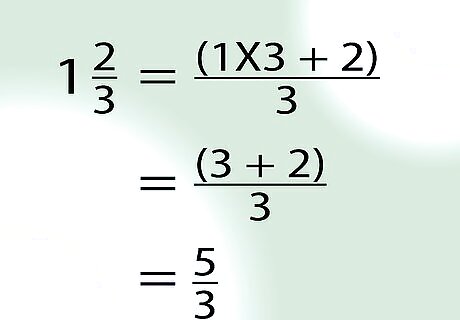
Add the numerator to the product. You now know the product of ac = 3, so now it's time to add b = 2: 3 + 2 = 5. This sum, 5, is the new numerator of your improper fraction.
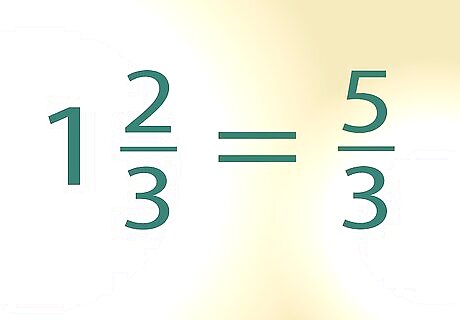
Rewrite the improper fraction with the new numerator. Remember that the denominator (c = 3) remains the same from the original fraction, and the new numerator is 5. The improper fraction converted from the original mixed number, therefore, is 5/3.
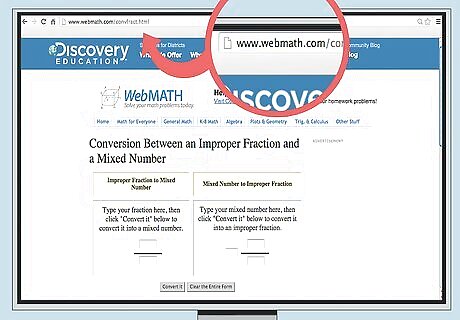
Check your work. To be certain, you can always double check your math by running the numbers again, or verifying the answer using an online calculator.
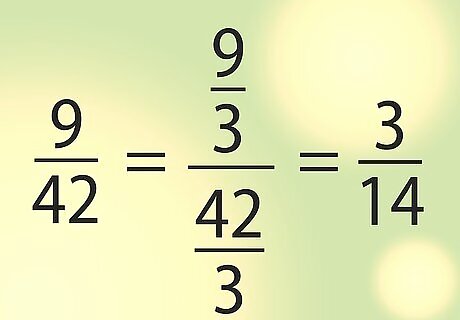
Reduce the fraction to its simplest form if necessary. The simplest form is the smallest and easiest way to represent a fraction. To reduce a fraction to its simplest form, determine if the numerator and denominator have common factors. If they do, select the highest one and divide the numerator and denominator by that number. For instance, in the fraction 9/42, the greatest common factor is 3. Divide both the numerator and denominator by the greatest common factor to get the fraction's simplest form: 9 ÷ 3 / 42 ÷ 3 = 3/14 If you'd like to write the fraction as a decimal, simply divide the numerator by the denominator. EXPERT TIP Joseph Meyer Joseph Meyer Math Teacher Joseph Meyer is a High School Math Teacher based in Pittsburgh, Pennsylvania. He is an educator at City Charter High School, where he has been teaching for over 7 years. Joseph is also the founder of Sandbox Math, an online learning community dedicated to helping students succeed in Algebra. His site is set apart by its focus on fostering genuine comprehension through step-by-step understanding (instead of just getting the correct final answer), enabling learners to identify and overcome misunderstandings and confidently take on any test they face. He received his MA in Physics from Case Western Reserve University and his BA in Physics from Baldwin Wallace University. Joseph Meyer Joseph Meyer Math Teacher Simplifying a fraction just changes the way the fraction is written. To simplify a fraction, you can cancel out the greatest common factor from the numerator and denominator or convert an improper fraction to a mixed number. This doesn't change the inherent value of the fraction.
Changing an Improper Fraction to a Mixed Number

Remember the mixed number formula. Just as you can convert a mixed number into an improper fraction, so too can you convert going the other way. Like before, use the formula a b/c for your mixed number. The denominator from your improper fraction will be the same denominator in your mixed number. For instance, when converting the improper fraction 7/5 into a mixed number, c = 5.
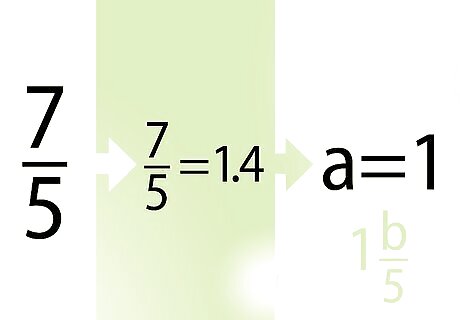
Divide the improper fraction’s numerator by its denominator. Use long division or a simple calculation to determine how many times the denominator will fully go into the numerator (don't worry about any decimals). That number will be the mixed number’s whole number (the a value). Dividing 7/5 gives you 1.4, where a = 1.
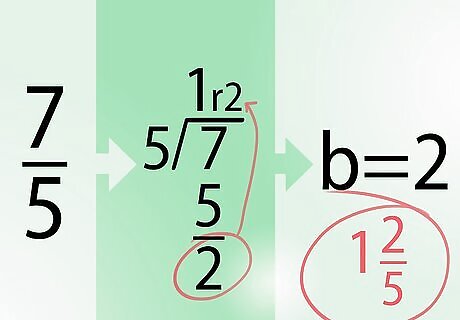
Determine the remainder. The remainder is your new numerator. When you divide 7/5 you get 1 with a remainder of 2, where b = 2. You now have all the components of your mixed number: the improper fraction 7/5 gives you the mixed number 1 ⅖.




















Comments
0 comment